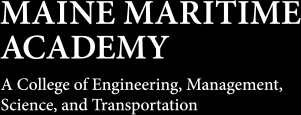Passage to Freedom
I became Commander of the USS Kirk in 1974 with 250 enlisted aboard; average age: 23.
I think America needs to know what they did.
The Kirk and crew led the largest humanitarian rescue in US Navy history at the end of the Vietnam War when Saigon fell in the spring of 1975.
Initially, we were stationed offshore to serve as a vector for the Seventh Fleet, which had been assigned the task of taking aboard US Embassy personnel who had to be evacuated. You could see the horizon was red from all the bombs going off.
Watch a video of the USS Kirk and crew’s dramatic rescue effort.
As American aircraft headed toward the fleet, the South Vietnamese saw them and were also trying to escape. If they could find something that was flying, like a Huey, they’d load their family, fly out and look for a ship to land on.
But there was nowhere for them to land, as the fleet’s carriers were full. When we looked up, the sky was full of Hueys… if they had to ditch, they would all have been dead.

Largest humanitarian rescue in U.S. Navy history recalled by Capt. Paul Jacobs ‘58
We had a flight deck built for one helicopter. I gave the command to take on as many Vietnamese helicopters as we could. As soon as one landed and unloaded, we pushed it over the side and landed another. We took on 16. I didn’t ask permission but made the decision on my own because it was the right thing to do.
That evening, I was ordered to rendezvous with what was left of the South Vietnamese Navy and escort them to the Philippines. At dawn the next day, we looked out and there was a parking lot full of ships and vessels loaded with thousands of people, some 32,000 people packed aboard in unbelievable heat with very little food and water.
My corpsman and his team went from ship to ship, lending aid. They did this for the entire passage to Subic Bay.
We brought pregnant women aboard the Kirk and helped everyone else as we could. There was one thing on my mind: to get them to a safe harbor, so the fewest would die. [There was one fatality.]
I can’t help but be emotional when I think about the crew and what they did, which they were neither trained for, nor expected to do.
For me, looking back on it and how MMA played a role in my life, I’ll make one observation: I and others from MMA come with the attitude: What do you need? What’s the job? Let me get it done, without whining about it. Others are waiting to be told what to do. MMA alumni are not that kind. That’s the best I can say.█
—BY CAPT. PAUL JACOBS ’58, USN (retired)
Photos: U.S. Navy & Billy Sims




Post Comment
Comments are moderated and will be reviewed prior to posting online. Please be aware that when you submit a comment, you agree to the following rules:
Maine Maritime Academy reserves the right to delete any comment that does not comply with these guidelines and is not responsible or liable in any way for comments posted by its users. If you have a message for the editor, please email mariner@mma.edu.
Class Notes
View All >Read More
Read More
Read More